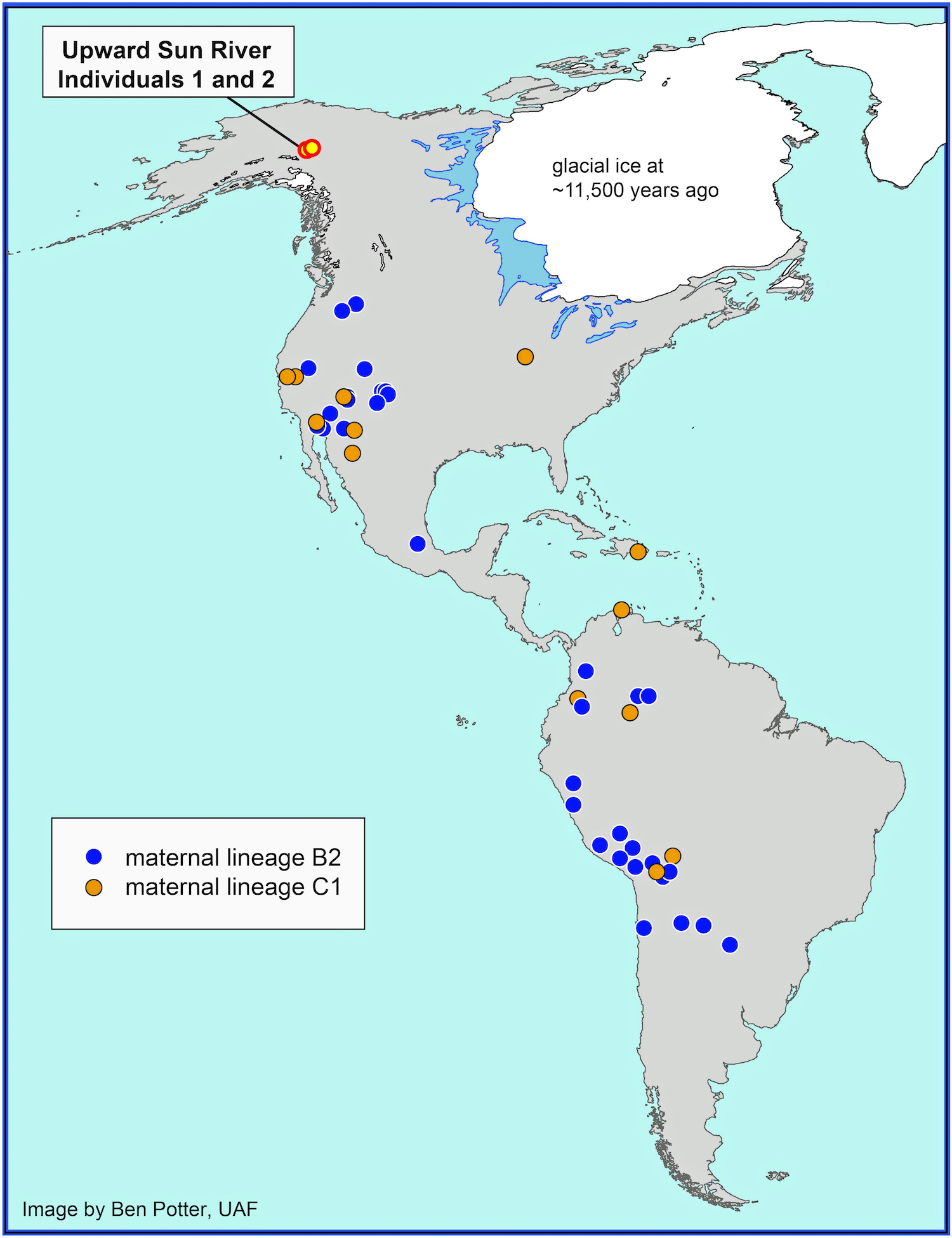
Researchers work on excavation at the Upward Sun River site in Alaska. Photo by Ben Potter / University of Alaska Fairbanks
Two ancient infants who were laid to rest in Alaska are linked to present-day Native populations in the United States, Mexico, South America and even the Caribbean, researchers reported on Monday. The infants were buried at a village near the Upward Sun River about 11,500 years ago. They had different mothers and DNA shows they represent two distinct lineages of Native peoples in the Americas. “These infants are the earliest human remains in northern North America and they carry distinctly Native American lineages,” University of Utah geneticist Dennis O’Rourke said in a press release. “These genetic variations had not previously been known to have existed this far north and speak to the early genetic diversity of the time.”

This map shows the location of the Upward Sun River site in Alaska where the remains of two infants, Upward Sun River individuals 1 and 2, were found in an 11,500-year-old burial. A new analysis shows the infants belong to two genetic groups or lineages known as B2 and C1. The map shows locations of other Native American groups throughout the Americas that are part of the same lineages. Image by Ben Potter / University of Alaska Fairbanks
By comparing the DNA of the infants to other samples, researchers found links as far south as Chile and Argentina. There also was a connection to the Midwest region of the U.S. and the island that is now home to the Dominican Republic. Additionally, the two lineages are distinct to the Americas. They are not found in Asia or in Siberia, according to researchers, indicating the unique genetic nature of Native peoples. Three children were uncovered at the Upward Sun River site along with funerary objects and other items. DNA material was extracted from two of the younger infants. The same site turned up evidence of salmon fishing, the oldest known evidence of its kind in North America. Get the Story:
Ancient Alaska infants' genes suggest ice-age diversity (Alaska Dispatch News 10/26)
Ice Age burials in Alaska hold clues to how Americas were populated (The Fairbanks Daily News-Miner 10/27)
DNA of Ancient Children Offers Clues on How People Settled the Americas (The New York Times 10/27)
Join the Conversation
Related Stories:Ruth Hopkins: Western science catches up to Native traditions (10/14)
Study confirms Native people fished for salmon during Ice Age (9/22)
Kenaitze Tribe authorizes genetic studies on ancestral remains (09/10)
Sen. Murray introduces bill to repatriate Kennewick Man to tribes (08/10)
Indigenous peoples in South America and Australia linked (07/21)
Washington governor supports repatriation of Kennewick Man (06/30)
Genetic analysis confirms Kennewick Man was Native American (06/18)
Genetic research confirms Alaska homeland for Inupiat people (05/04)
Tanya Lee: Don't let our racist history cloud genetics research (02/05)
The Atlantic: Native people wary of DNA tests and genetic studies (01/27)
Initial DNA tests show Kennewick Man linked to Native peoples (01/19)
DNA study finds distinct population of Native people in Arctic area (08/29)
Remains of 12,600-year-old Native toddler reburied in Montana (06/30)
Smithsonian scientist expresses caution on new DNA research (05/16)
DNA of girl found in Mexico linked to present-day Native people (05/15)